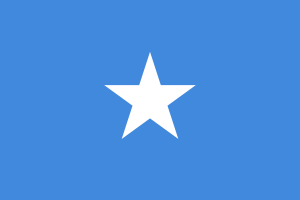Language/Somali/Grammar/Personal-Pronouns
| ◀️ Introducing Yourself — Previous Lesson | Next Lesson — Basic Verb Conjugation ▶️ |
As a Somali language teacher with over 20 years of experience, I am excited to introduce you to the exciting world of Somali grammar. In this lesson, we will be focusing on personal pronouns in Somali, which are essential for effective communication in the language. By the end of this lesson, you will be able to use subject pronouns, object pronouns, and possessive pronouns with confidence. Let's get started!
Once you've mastered this lesson, take a look at these related pages: Questions & Future Tense.
Personal Pronouns in Somali
Personal pronouns are used to replace nouns in sentences, making them shorter and more concise. In Somali, personal pronouns have different forms depending on their grammatical role in the sentence. The three types of personal pronouns we will be covering in this lesson are subject pronouns, object pronouns, and possessive pronouns.
Subject Pronouns
Subject pronouns are the pronouns used in place of the subject of a sentence. Here are the subject pronouns in Somali:
| Somali | Pronunciation | English |
|---|---|---|
| aan | ah-an | I |
| ad | ah-d | you (singular) |
| uu | oo | he |
| ay | ay | she |
| aanu | ah-an-oo | we (inclusive) |
| anigu | ah-ni-gu | we (exclusive) |
| adigu | ah-di-gu | you (plural) |
| ayuu | ah-yoo | they (masculine) |
| ayaa | ah-ya | they (feminine) |
Here are some examples of subject pronouns being used in sentences:
- Aan dumar ah. (I am a woman.)
- Ad baad tahay? (Are you okay?)
- Uu yahay afar sano. (He is four years old.)
- Ay isku bartaan. (She is studying.)
- Aanu Raage ahay. (We are Raage.)
- Anigu waxaan arki doonaa filimka. (I will watch the movie.)
- Adigu way baad tihiin? (Where did you guys come from?)
- Ayaa ku noqday halkan? (Did they arrive here?)
Object Pronouns
Object pronouns are used in place of the object in a sentence. Here are the object pronouns in Somali:
| Somali | Pronunciation | English |
|---|---|---|
| i | ee | me |
| idinku | ee-din-ku | you (singular) |
| inta | in-tah | him/it |
| intii | in-tee | her/it |
| innaga | in-na-ga | us |
| innagu | in-na-gu | you (plural) |
| intooda | in-too-da | them (masculine) |
| inteendaba | in-teen-da-ba | them (feminine) |
Here are some examples of object pronouns being used in sentences:
- Waxaan ku jiraa hotalada. (I am at the hotel.)
- Baad ku taalaa garoonka. (You are going to the airport.)
- Waxaan ku dhaawacmay. (I am injured.)
- Inta ayuu booqon doonaa. (He will visit him/it.)
- Intii ayaa iskaga dhigay. (She gave it to her.)
- Innaga waxaanu hambalyo u diraynaa. (We send our regards.)
- Intooda waxaanu ku dhaqaaqaynaa. (We dislike them.)
- Inteendaba waxay kala noqotay. (They were together.)
Possessive Pronouns
Possessive pronouns are used to show possession or that something belongs to someone or something. Here are the possessive pronouns in Somali:
| Somali | Pronunciation | English |
|---|---|---|
| igu | ee-gu | my |
| idinku | ee-din-ku | your (singular) |
| inta | in-tah | his/its |
| intii | in-tee | hers/its |
| inaga | in-na-ga | our |
| inagu | in-na-gu | your (plural) |
| intooda | in-too-da | theirs (masculine) |
| inteendaba | in-teen-da-ba | theirs (feminine) |
Here are some examples of possessive pronouns being used in sentences:
- Igu jiraa gabayga. (This is my poem.)
- Idinku suurtagal tahay. (You are responsible.)
- Inta waxay tahay. (It is his/its.)
- Intii waxay iiga dhawrtaan. (She helped me out.)
- Inaga muddo dheer ayaa noqotay. (We have been here for a long time.)
- Inagu sidii barafka joogno waxay ku dhacaan. (We experience it like a thunderstrike.)
- Intooda waxay saraan si loo hubiyo. (They hide theirselves to avoid suspicion.)
- Inteendaba iigu dambaysay. (They have caught me.)
Now that you have learned about personal pronouns in Somali, take some time to practice writing and speaking sentences using them. The more you practice, the more you will become comfortable using these essential grammatical structures in Somali.
Other Lessons
- Prepositions
- Basic Verb Conjugation
- Noun Gender and Plurals
- Adverbs
- Common Adverbs
- Negation
- Time
- Conditional Mood
- Possession
- Questions
Sources
| ◀️ Introducing Yourself — Previous Lesson | Next Lesson — Basic Verb Conjugation ▶️ |

